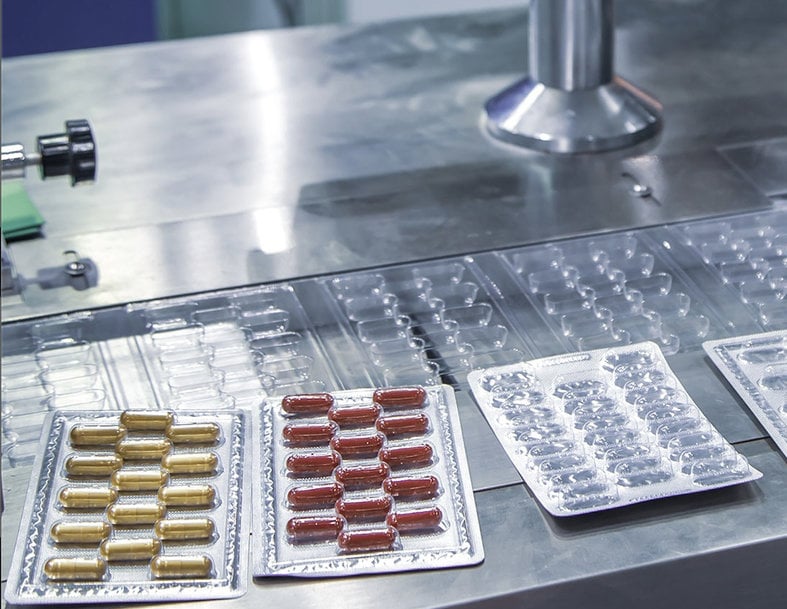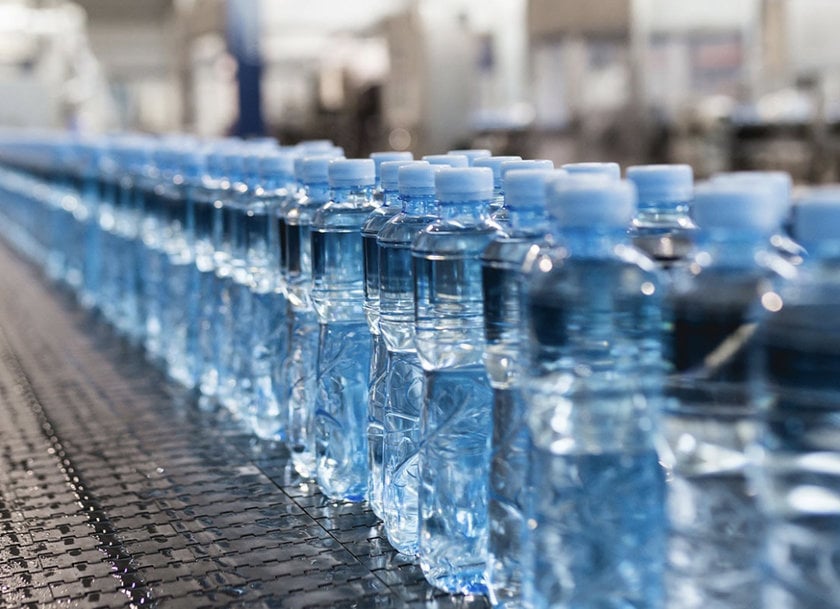www.ptreview.co.uk
02
'22
Written on Modified on
MACHINE VISION FOR TRANSFORMING MARKETS – AN OPPORTUNITY FOR THE PACKAGING INDUSTRY
Many industries are currently facing major challenges resulting from the significant changes in the wake of digitalisation, automation and the sustainability movement. In addition, customers expect an ever-increasing degree of flexibility and individualisation. The change opens up great opportunities for manufacturers. However, it takes expertise to make the most of it with the right resources.

Using the packaging industry as an example, we will show you how machine vision can help to ensure 100% quality control with the highest flexibility and safety requirements and constantly growing production speeds.
Industrial challenges
There is a huge diversity of materials and shapes in the packaging industry as packaging has multiple functions.
On top of that, there are new requirements such as:
- Sustainable packaging material at no extra cost
- Smart packaging - NFC
- Security features or counterfeit protection
- Ensuring traceability
- Product protection
- Small batch sizes
- Innovative designs for a special unboxing experience
Especially the topics of sustainability and safety bring about significant changes in materials and design concepts. New materials and techniques are called for without jeopardising product safety or driving up the prices.

Sustainability and product safety
These two aspects place special demands on imaging, as every inspection station needs to be adapted to the new conditions for every new material and every newly designed product.

Sustainability and product safety
These two aspects place special demands on imaging, as every inspection station needs to be adapted to the new conditions for every new material and every newly designed product.
- Machine vision application examples
- Checking cardboard boxes for correct punching and cutting,
- Checking the thread of glass bottles for correct shaping,
- Reading embossed numbers or punched dot codes on printed packaging,
- Inspecting caps for correct side assembly, or
- Reliably checking expiry dates on colour-printed, uneven aluminium lids.
Modern production facilities enable the manufacture of different types of parts with just one machine in order to meet specific requirements for small batches and one-offs. Before shipping, it is necessary to classify the products so that they can be packaged accordingly.
A 3D sensor solution mounted on the robot is used to identify the correct objects, pick them and place them in the appropriate containers. Suitable software, such as the CVB Polimago machine learning approach, can help locate rotation-invariant or damaged objects, for example. In this way, misarranged parts or production errors can be reliably detected.

Machine vision products and solutions
Cameras with InGaAs sensors offer a particularly promising approach that is being increasingly used. They make coloured prints simply „disappear“ in the short-wave infrared range (SWIR). The printed area is thus blanked out and the dot codes relevant for inspection can be reliably checked.
Cameras in the SWIR range can also be used to check fill levels or to look through opaque packaging. Background: Short-wave infrared rays reach deeper or can also "see through" the packaging.
Even products that are difficult to inspect, such as sugar, salt, seeds or nuts, can be reliably sorted with the help of SWIR components before being packaged.
Fruit and vegetables can be inspected for ripeness and freshness even in the packaging.
www.stemmer-imaging.com
A 3D sensor solution mounted on the robot is used to identify the correct objects, pick them and place them in the appropriate containers. Suitable software, such as the CVB Polimago machine learning approach, can help locate rotation-invariant or damaged objects, for example. In this way, misarranged parts or production errors can be reliably detected.

Machine vision products and solutions
Cameras with InGaAs sensors offer a particularly promising approach that is being increasingly used. They make coloured prints simply „disappear“ in the short-wave infrared range (SWIR). The printed area is thus blanked out and the dot codes relevant for inspection can be reliably checked.
Cameras in the SWIR range can also be used to check fill levels or to look through opaque packaging. Background: Short-wave infrared rays reach deeper or can also "see through" the packaging.
Even products that are difficult to inspect, such as sugar, salt, seeds or nuts, can be reliably sorted with the help of SWIR components before being packaged.
Fruit and vegetables can be inspected for ripeness and freshness even in the packaging.
www.stemmer-imaging.com

